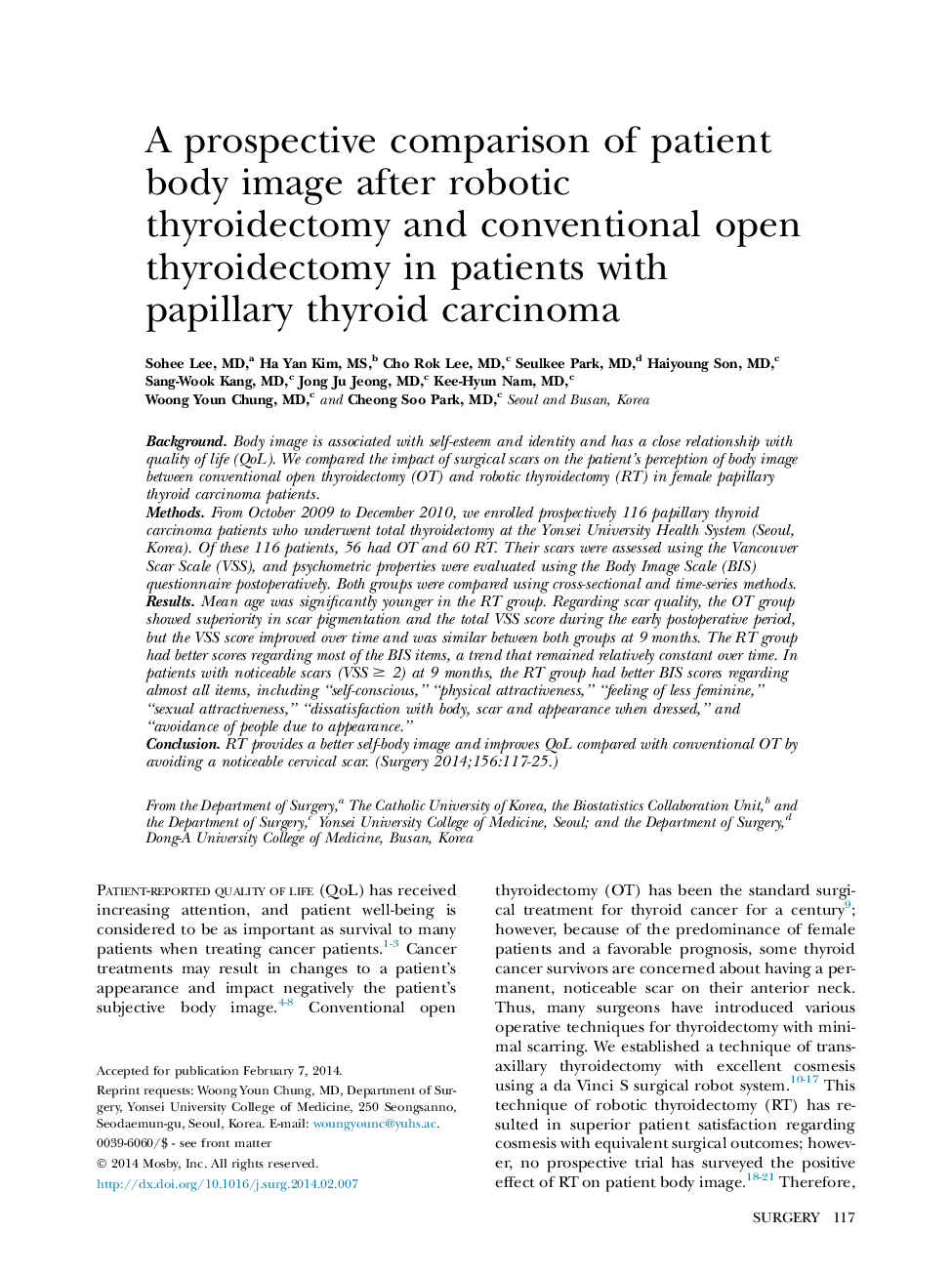| Article ID | Journal | Published Year | Pages | File Type |
|---|---|---|---|---|
| 4307952 | Surgery | 2014 | 9 Pages |
BackgroundBody image is associated with self-esteem and identity and has a close relationship with quality of life (QoL). We compared the impact of surgical scars on the patient’s perception of body image between conventional open thyroidectomy (OT) and robotic thyroidectomy (RT) in female papillary thyroid carcinoma patients.MethodsFrom October 2009 to December 2010, we enrolled prospectively 116 papillary thyroid carcinoma patients who underwent total thyroidectomy at the Yonsei University Health System (Seoul, Korea). Of these 116 patients, 56 had OT and 60 RT. Their scars were assessed using the Vancouver Scar Scale (VSS), and psychometric properties were evaluated using the Body Image Scale (BIS) questionnaire postoperatively. Both groups were compared using cross-sectional and time-series methods.ResultsMean age was significantly younger in the RT group. Regarding scar quality, the OT group showed superiority in scar pigmentation and the total VSS score during the early postoperative period, but the VSS score improved over time and was similar between both groups at 9 months. The RT group had better scores regarding most of the BIS items, a trend that remained relatively constant over time. In patients with noticeable scars (VSS ≥ 2) at 9 months, the RT group had better BIS scores regarding almost all items, including “self-conscious,” “physical attractiveness,” “feeling of less feminine,” “sexual attractiveness,” “dissatisfaction with body, scar and appearance when dressed,” and “avoidance of people due to appearance.”ConclusionRT provides a better self-body image and improves QoL compared with conventional OT by avoiding a noticeable cervical scar.
